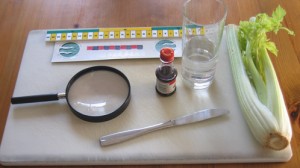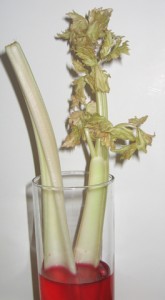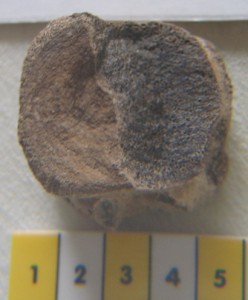Lesson Plan – How Do Fossils Form?
Everything Dinosaur team members have created this simple lesson plan that can be set up as a class experiment for part of a science week or term topic exploring rocks and fossils. Using very basic resources, the process of permineralisation can be demonstrated in a classroom, one of the key factors in petrifaction, the process of fossilisation. Living things have lots of pores and open spaces in them. Even hard parts of an organism such as wood, teeth and bones are full of holes. It is these holes that can become filled with minerals that help in the process of turning organic matter into a fossil.
Everything Dinosaur Lesson Plan
There are many different types of fossil, trace fossils, natural casts, internal moulds, external moulds and so forth but how to demonstrate to a class the fossilisation process?
Lesson Plan Experiment – Observable Movement of Coloured Water up a Celery Stalk to Prove that Open Spaces in Living Things Can be Permineralised
Resources
- Celery stalks (with leaves on if possible)
- Glass or clear plastic beaker
- Food colouring (just a few drops – blue or red works best)
- Magnifying glasses for the children to study the celery stalks closely and to observe the change in colour
- Simple chopping tool to trim the celery stalks
- Ruler to measure the length of the stalks used
- Tap water
Resources for the How Fossils Form Experiment
Picture credit: Everything Dinosaur
Structuring the Lesson
Divide the class into groups and give each group a set of the above resources. Explain using pictures of fossils (available free of charge from Everything Dinosaur), what fossils are, stress that many fossils are the remains of once living things that have been turned to stone (petrifaction). The celery’s vascular transport system can be used to demonstrate that living things are not solid objects but have many open spaces and pores in them.
By placing a stalk of celery into coloured water and observing the change in colour, this experiment demonstrates this principle very nicely. The ruler can be used to measure the length of the stalks, and the magnifying glasses can assist with the children’s observation of the structure of the plant and the movement of the coloured dye via the xylem.
Overnight Dramatic Changes Can Be Seen
Picture credit: Everything Dinosaur
The children can record what they observe during the course of the day and the experiment can be left overnight or even for longer if required.
For more detailed information about this lesson and for further information about fossil formation: How Do Fossils Form?
A Close up of a Dinosaur Bone Shows the Internal Structure
Picture credit: Everything Dinosaur
Extension Ideas
- Why was it easier to see the colour change in the leaves and not the stalks? Hint – links to the functions of different parts of the plant
- What happens to the softer parts of animals? Do they fossilise?
- What examples of fossils formed from the soft parts of animals and plants can the students find? More able pupils can be asked to work out what conditions are needed for soft parts to turn to fossils.
- Can the class think up examples of other types of fossil – footprints, fossils of shells, fossilised wood etc?
By keeping a record of this experiment it will work in nicely when it comes to exploring the roles of different parts of the plant.
National Curriculum (England) Coverage




